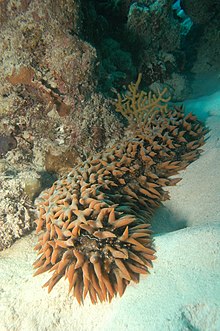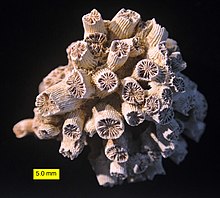Invertebrate

An invertebrate is an animal without a vertebral column. The group includes 95% of all animal species[1] — all animals except those in the Chordate subphylum Vertebrata (fish, reptiles, amphibians, birds, and mammals).
Carolus Linnaeus' Systema Naturae divided these animals into only two groups, the Insecta and the now-obsolete vermes (worms). Jean-Baptiste Lamarck, who was appointed to the position of "Curator of Insecta and Vermes" at the Muséum National d'Histoire Naturelle in 1793, both coined the term "invertebrate" to describe such and divided the original two groups into ten, by splitting off Arachnida and Crustacea from the Linnean Insecta, and Mollusca, Annelida, Cirripedia, Radiata, Coelenterata and Infusoria from the Linnean Vermes. They are now classified into over 30 phyla, from simple organisms such as sea sponges and flatworms to complex animals such as arthropods and molluscs.
Invertebrates form a paraphyletic group. (For a full list of animals considered to be invertebrates, see animal.) All the listed phyla are invertebrates along with two of the three subphyla in Phylum Chordata: Urochordata and Cephalochordata. These two, plus all the other known invertebrates, have only one cluster of Hox genes, while the vertebrates have duplicated their original cluster more than once.
Within paleozoology and paleobiology, invertebrates big and small are often studied within the fossil discipline called invertebrate paleontology.
Phyla and common examples

- Echinodermata — sea stars, sea urchins, sea cucumbers
- Arthropoda — insects, arachnids, crustaceans
- Nematoda — round worms
- Mollusca — squid, snails, bivalves
- Annelida — segmented worms (earthworms, leeches, polychaetes)
- Nemertea — ribbon worms
- Platyhelminthes — flat worms
- Rotifera
- Acoelomorpha
- Ctenophora — Comb jellies
- Cnidaria — jellyfishes, corals, sea anemones, hydras
- Porifera — sponges
- insects -enemiipie]],worm]],cricket.
See also
References
Further reading
- Hyman, L. H. 1940. The Invertebrates (6 volumes) New York : McGraw-Hill. A classic work.
- Anderson, D. T. (Ed.). (2001). Invertebrate zoology (2nd ed.). Oxford: Oxford University Press.
- Brusca, R. C., & Brusca, G. J. (2003). Invertebrates (2nd ed.). Sunderland, Mass. : Sinauer Associates.
- Miller, S.A., & Harley, J.P. (1996). Zoology (4th ed.). Boston: WCB/McGraw-Hill.
- Pechenik, Jan A. (2005). Biology of the invertebrates. Boston: McGraw-Hill, Higher Education. pp. 590 pp. ISBN 0072348992.
- Ruppert, E. E., Fox, R. S., & Barnes, R. D. (2004). Invertebrate zoology: a functional evolutionary approach. Belmont, CA: Thomas-Brooks/Cole.
External links
- A. R. Maggenti & S. Gardner (2005). Online Dictionary of Invertebrate Zoology.
- Support for endangered invertebrates
- African Invertebrates
